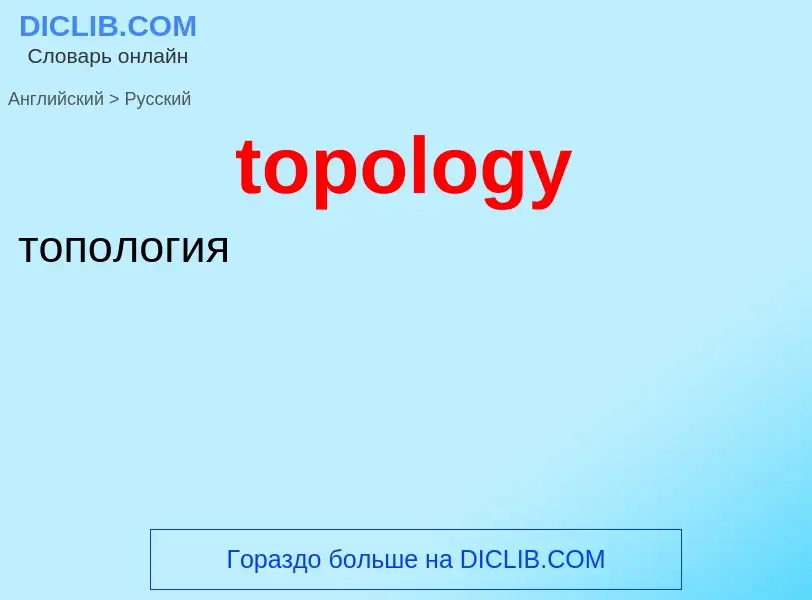Translation and analysis of words by artificial intelligence
On this page you can get a detailed analysis of a word or phrase, produced by the best artificial intelligence technology to date:
- how the word is used
- frequency of use
- it is used more often in oral or written speech
- word translation options
- usage examples (several phrases with translation)
- etymology
topology - translation to russian
[tɔ'pɔlədʒi]
общая лексика
топология [сети]
общая физическая или логическая конфигурация телекоммуникационной системы: физическая топология - схема соединений компонентов кабелями и проводами, а логическая топология описывает, как по сети проходят сообщения
изучение взаимосвязей, межсоединений
существительное
математика
топология
Definition
Wikipedia
In mathematics, topology (from the Greek words τόπος, 'place, location', and λόγος, 'study') is concerned with the properties of a geometric object that are preserved under continuous deformations, such as stretching, twisting, crumpling, and bending; that is, without closing holes, opening holes, tearing, gluing, or passing through itself.
A topological space is a set endowed with a structure, called a topology, which allows defining continuous deformation of subspaces, and, more generally, all kinds of continuity. Euclidean spaces, and, more generally, metric spaces are examples of a topological space, as any distance or metric defines a topology. The deformations that are considered in topology are homeomorphisms and homotopies. A property that is invariant under such deformations is a topological property. Basic examples of topological properties are: the dimension, which allows distinguishing between a line and a surface; compactness, which allows distinguishing between a line and a circle; connectedness, which allows distinguishing a circle from two non-intersecting circles.
The ideas underlying topology go back to Gottfried Leibniz, who in the 17th century envisioned the geometria situs and analysis situs. Leonhard Euler's Seven Bridges of Königsberg problem and polyhedron formula are arguably the field's first theorems. The term topology was introduced by Johann Benedict Listing in the 19th century, although it was not until the first decades of the 20th century that the idea of a topological space was developed.

![A continuous transformation can turn a coffee mug into a donut.<br>Ceramic model by Keenan Crane and [[Henry Segerman]]. A continuous transformation can turn a coffee mug into a donut.<br>Ceramic model by Keenan Crane and [[Henry Segerman]].](https://commons.wikimedia.org/wiki/Special:FilePath/Topology joke.jpg?width=200)
